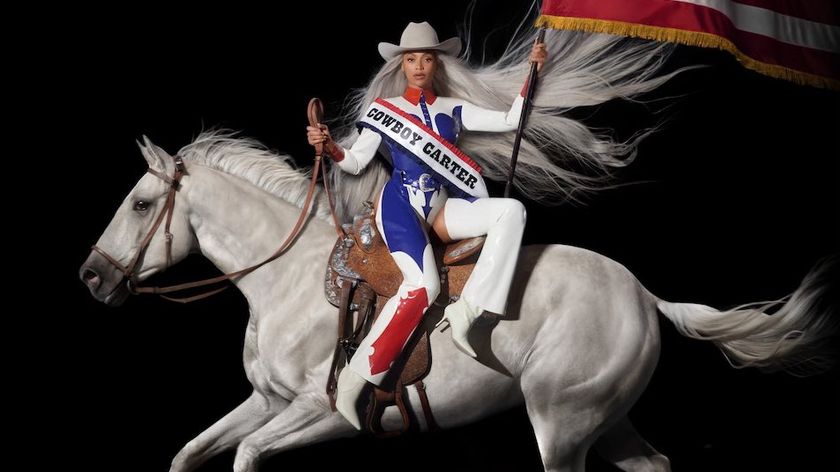
On 27 November, Tom Holkenborg aka Junkie XL returns with Synthesized, his first album in four years. The lengthy gap between releases doesn't mean that the acclaimed electronic artist has been sitting around waiting for inspiration or leading the lush life in Malibu - for the past few years, Holkenborg has busied himself with film scores, most notably his work with Oscar-winning composer Hans Zimmer on films such as Batman: The Dark Knight Rises, Inception, Madagascar 3, Megamind and the upcoming Man Of Steel.
In addition, Holkenborg's dance card has been filled in other ways, creating music for EA video games and moonlighting as an Associate Producer at The ArtEX Conservatorium in the Netherlands.
Synthesized, Holkenborg's playful, eclectic and wildly entertaining return to the Junkie XL moniker, is his strongest effort yet, featuring striking performances by Tears For Fears' Curt Smith, Tommie Sunshine, Isis Salam, not to mention a evocative sample of '60s LSD guru Timothy Leary.
We caught up with Holkenborg recently to talk about how he mixes electronics with traditional rock instruments, his thoughts on massive bass drops, new gear and how teaching actually teaches him a thing or two.
Several years ago, The Edge told me how new guitar sounds can inspire him to write songs. Does that ever happen to you with music software?
"Oh, yes. With me, that's totally the case. I rarely sit down with an acoustic guitar and work on a song. It does happen, but it's rare for the Junkie XL stuff that I'll map out everything on an acoustic. With Junkie XL music, anything goes. It could be an exciting rhythm, or it could be when I'm walking on the street and I'll hear things - if certain sounds fall into a particular rhythm, that will inspire me.
"My studio is half software based and half hardware. I've got something like 10 guitars, a bunch of amps, a drum kit, bass guitars, a modular synth and a bunch of outboard synths - and, of course, all the software programs. Just yesterday, I got the Moog Voyager XL in, which is their flagship synthesizer. You just flick through the sounds, and immediately it kicks off so many ideas of what you can do.
Get the MusicRadar Newsletter
Want all the hottest music and gear news, reviews, deals, features and more, direct to your inbox? Sign up here.
"With the soundtrack work that I do, it's different. I've been working with Han Zimmer on a number of films - we're working on Man Of Steel at the moment - and I find that you approach things from the other side. Yes, sound is important in the initial process to write a theme or something, but eventually, once it's done and you have to work on the scene, it's not a part of the creative process."
What kinds of guitars do you have in the studio?
"I still have an old Ibanez from back in the day, it's one of the Studio series. Then I have two Les Pauls - one is older with the original pickups and electronics, and the other one is hyped up with a bunch of new electronics and preamps. That one makes a completely different sound than the old one.
"Then I have some basses, a Fender Precision and an Ibanez II - the Ibanez is more modern - and a Dean acoustic bass. I have a Cordoba six-string classical guitar, two Ibanez acoustics - one is a 12-string - and a Martin acoustic. Let's see, then I have Fender Strat reissue and a digital Roland guitar. Oh, and I have latest Line 6 Variax guitar, too. A fair amount of guitars." [Laughs]
Do you think the fact that you play traditional instruments helps to distinguish you from other electronic artists who don't?
"Probably so. The funny thing with me is, I was doing a show in Holland a few weeks ago, and I was going through some of the older material, and I realized that I had never made a fully electronic track. That was quite striking to me. The most electronic track on the new album is Leave Behind Your Ego, but it still has a live drum track and a live bass. I love to combine acoustic instruments with electronics. It creates a sound that's different from other electronic producers. It might not always mean that I'm running in front of the pack, but that's not why I make music in the first place."

"Creating moments has always been important in dance music," says Holkenborg. "It's all about prolonging that effect, and then when it drops, it drops." © Harper Smith
Has there been a new piece of gear you've acquired in the last year that you already consider essential?
"Probably my modular synthesizer, which I bought four years ago. It's ten feet wide and six feet tall, and it's made by Analog Systems in England. It has two analog sequencers and a huge amount of modules. That's what I use to build my synthesizer sounds, at least when I have the time to do it.
"When you work on a film score, everything has to be done yesterday. When you work on your own music, you can take a week to do a bassline. [Laughs] But I would definitely say, for the last four years, the modular synthesizer has been essential to what I do."
Speaking of basslines, do you think we've reached a tipping point with people trying to outdo one another in overwhelming bass moments?
"Creating moments has always been important in dance music. It's all about prolonging that effect, and then when it drops, it drops. That will always be interesting. But there was a time period in the height of the electro days, maybe two or three years ago, where it was all about hitting harder and harder, which was just a question of limiting and compression and using harder sounds.
"I think with a lot of tracks I've heard recently, we're talking more about musical drops. You know, like, 'Is it musical to go to this section, or is it musical to go to that section?' It's not just about focusing on the kick and the bass."
It's similar to shred guitar back in the day, the whole "How fast is too fast?" phenomenon.
"Exactly. I don't know if you listened to a lot of metal, but I did. I actually played in a metal band, and it was all about speed, you know?"
How did it take you to record Synthesized? It has been a while since you put an album out.
"That's because I've been working on so many film scores. I would use my album as that necessary breath of fresh air between projects. If you worked on string arrangements for 90 days in a row, and then you finally get to program a kick drum and play it really loud on your system, you're like, 'Thank God!' So that's what happened: every month or two, I would work on it for a full 10 days. If it weren't spread out over four years, I think the whole thing would've taken me four months or something like that."
I love the Timothy Leary sample on Leave Behind Your Ego. How did you find that?
"For this album, I decided to work with an external A&R guy, who's a friend of mine, and we were looking for some vocal samples. He came up with Timothy Leary. I had to remind myself who Timothy Leary was at first. It wasn't easy coming up with something cool - there's so much 'blah, blah, blah.' But we found a great section, and that's what we used. It was perfect."
Talk to me how Gloria came about. What kind of layering went into the track?
"If I looked at my record shelf here in the studio - records that go back to the '60s and even the '50s - and I threw them on the floor and everything scattered about, that's how I went about this album. With a track like Gloria, it's about my love of late '70s/early '80s disco-rock songs - ZZ Top's Gimme All Your Lovin', KISS' I Was Made For Loving You, and things like that. That track was more like, 'Is he fucking serious? This is a joke, right?'
"So Gloria is like an homage to ZZ Top and KISS from back in the day. I really wanted to work with the singer of Datarock because I love their music, and I think he's got a great voice. We went back and forth - sometimes the vocal wasn't enough, sometimes it was too much, a little bit Deep Purple - so it was a matter of fine tuning. Humor is important in music."
You've been teaching a music media course for a while now. What's the most important thing you might have learned from your students?
"That's the amazing thing about teaching: it's always a win-win situation. I talk to so many people, whether they're famous designers or filmmakers, and they always say that teaching a course or talking to students is the most exciting thing. Not only can you give your knowledge to the kids, but you get a peek into the mind of a 17-year-old. It's fascinating.
"And the funny thing I've found is, none of the kids in my classes are interested in producing trance music. When they're 25 or 26, they're not going to be trance producers. What they're going to be, I don't know. All of the stuff they play me is very experimental. It's mind-boggling.
"Over the past four years, we've had something like 150, 160 students, and the information from them is what marketing companies strive for. What are the kids looking for in software? In sound in general? I've been doing this for a while, and when you take into account the workshops I've done and things at NAMM, it's been almost 20 years. You get to see the shifts, what kids are looking for. All of these 18 year olds have grown up with laptops and iPhones. They want to do everything on their phones.
"Yesterday, I had a video conference with the new, first-year freshmen. I showed them the studio, and they were really impressed, but at the end of the day, they just want to do it all on their phones or their iPads. That's just how it is."
Joe is a freelance journalist who has, over the past few decades, interviewed hundreds of guitarists for Guitar World, Guitar Player, MusicRadar and Classic Rock. He is also a former editor of Guitar World, contributing writer for Guitar Aficionado and VP of A&R for Island Records. He’s an enthusiastic guitarist, but he’s nowhere near the likes of the people he interviews. Surprisingly, his skills are more suited to the drums. If you need a drummer for your Beatles tribute band, look him up.

"Reggae is more freeform than the blues. But more important, reggae is for everyone": Bob Marley and the Wailers' Catch a Fire, track-by-track

“Part of a beautiful American tradition”: A music theory expert explains the country roots of Beyoncé’s Texas Hold ‘Em, and why it also owes a debt to the blues










